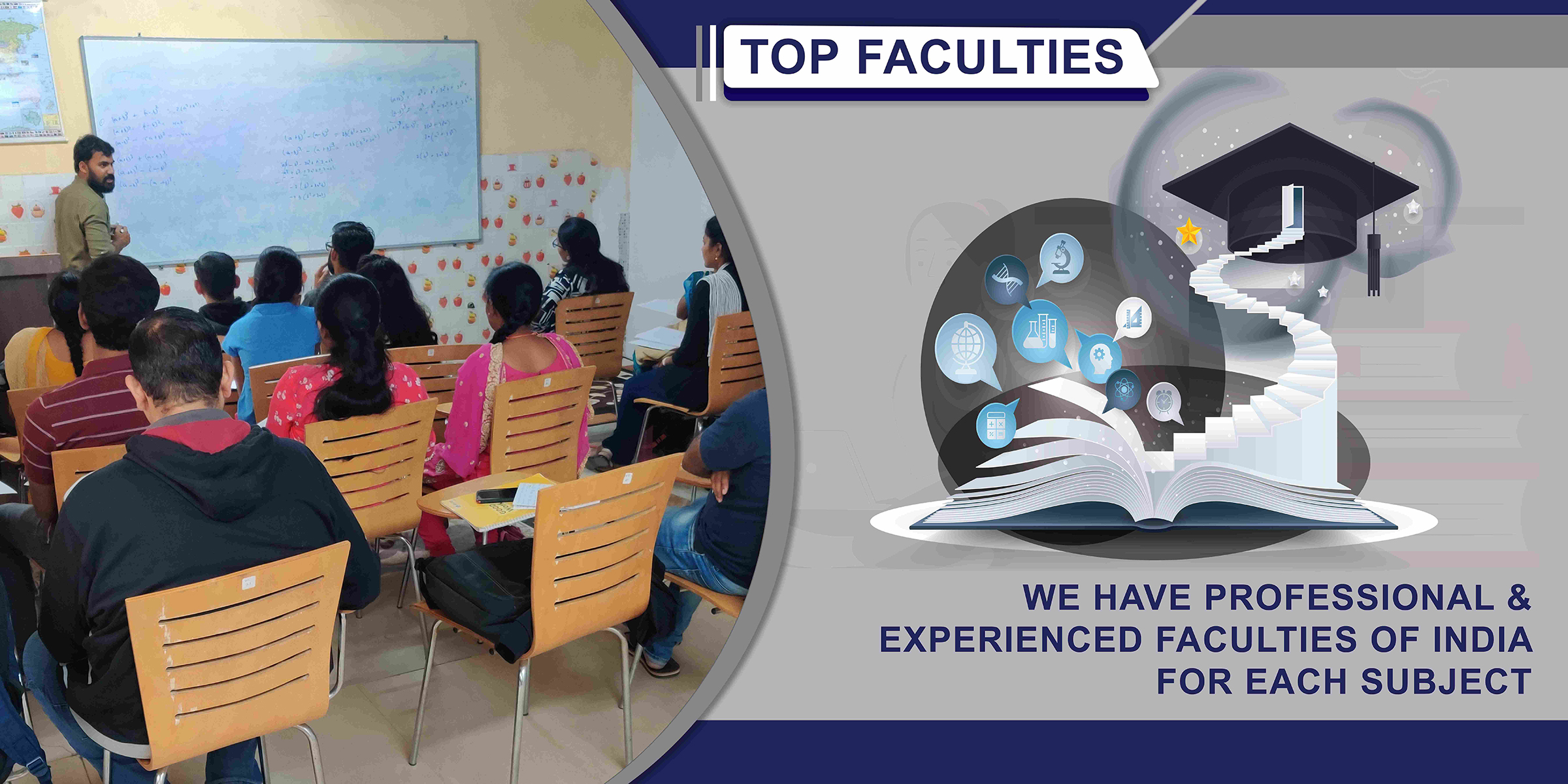- The assumption of sovereign powers by Qutbuddin Aibak in 1206 is regarded as the foundation of the Sultanate of Delhi.
- The Sultanate of Delhi (1206–1526) had five ruling dynasties:
1. The Slaves (1206–1290)
2. The Khaljis (1290–1320)
3. The Tughlaqs (1320–1413)
4. The Saiyyids (1414–451)
5. The Lodhis (1451–1526)
- Qutbuddin Aibak was the founder of the Slave dynasty.
- The Slave dynasty is called so because its many important rulers had originally been slaves. For example, Qutbuddin was a slave of Mohd. Ghori; Iltutmish was a slave of Qutbuddin.
- The Slaves were also called the ‘early Turks’, ‘Mamluks’ or ‘Ilbari’.
Qutbuddin Aibak (1206-1210)
- Qutbuddin Ai bak was the founder of the fi rst independent Turkish kingdom in Northern India.
- His capital was at Lahore and he was known as Lakhbaksh for his magnanimity. Hassan Nizami, the famous historian, adorned his court.
- Aibak built the Quwat-ul-Islam Mosque and the Adhai Din ka Jhonpra in Delhi and Ajmer respectively.
- He started the construction of the Qutab Minar and constructed its first storey, but he died in 1210 while playing Chaugan (Polo). The work was completed by his successor Iltutmish.
- This structure was built in memory of the Sufi saint Khwaja Qutbuddin Bakhtiar Kaki.
Iltutmish (1211-1236)
- After the death of Qutbuddin Aibak, Aram Shah ascended the throne, but he was deposed and Iltutmish was crowned the new Sultan.
- Iltutmish was the real founder of the Delhi Sultanate. He made Delhi the capital in place of Lahore.
- At the time of Qutbuddin’s death, he was the governor of Badaun.
- He saved Delhi Sultanate from the wrath of Changez Khan, the Mongol leader, in 1221.
- He completed the construction of Qutub Minar.
- He introduced the silver Tanka and the copper Jital.
- He set up an official nobility of slaves known as Chahalgani (group of forty).
- He organised the Iqta system.
- He died in 1236.
Razia Sultan (1236-1240)
- Iltutmish declared his daughter Razia Sultan to be his successor but the Amirs, disproving his wishes, put Rukn-ud-din Firoz Shah on the throne. He was later executed and Razia became the Sultan.
- She discarded her female attire and appeared before the public in a Quaba (cloak) and Kulah (hat).
- Razia appointed an Abyssinian slave Jamaluddin Yaqut as the Amir Akhur (Superintendent of Horses). The Turkish Amirs were jealous of his appointment. Altuniya, the governor of Sirhind, revolted. To quell the disorder, Razia went to the capital but Yaqut was murdered and she was imprisoned. She won over Altuniya and married him.
- In 1240 AD, Razia became the victim of a conspiracy and was assassinated near Kaithal.
- The successors of Razia were Mizuddin Bahram Shah (1240-42) and Alauddin Masud Shah (1242-46).
Nasiruddin Mahmud (1246-1265)
- The next Sultan, Nasiruddin Mahmud (1246-65), was a grandson of Iltutmish.
- Three years after the accession of the Sultan (1249), Ghiasuddin Balban, one of the leading Turkish nobles, married his daughter to the Sultan.
- In return, the Sultan appointed him to the post of regent (naib-i-mamlakat) with the title of Ulugh Khan (Premier Khan).
- Nasiruddin devoted all his time to prayers and religious observances such as making copies of the Quran or stitching caps for the devoted.
Amir Khusro
Amir Khusro was born in Badaun in UP in 1253. He was a disciple of Nizamuddin Auliya of Delhi. He is regarded as the father of Qauwali. Amir Khusro served seven kings from the times of Sultan Balban to Muhammad bin Tughlaq. He is also known as Tuti-eHind (Parrot of India). The inventions of Tabla and Sitar are traditionally attributed to him.
Ghiyas-ud-din Balban (1265-1288)
- Balban ascended the throne in 1265.
- He created a strong centralised army to deal with internal disturbances and to check the Mongols, who were posing a serious danger to the Delhi Sultanate.
- He introduced Persian etiquettes like sijda (prostation before the monarch) and paibos (kissing the feet of monarch) as the normal forms of salutation.
- He was first Indian ruler to introduce the celebration of the Persian new year Naoroz in India.
- He ordered the separation of the military department (diwan-i-wizarat), and it was placed under a minister for military affairs (diwan-i-ariz).
- He derived the basic elements of his theory of kingship from Sassanid Persia, where kingship had been raised to the highest possible level.
- Balban claimed his descent from the Iranian hero, Afrasiyab.
- He impressed upon the people that kingship was viceregency of God on earth (niyabat-i-khudai).
- The king was the shadow of God (zil-i-ilahi).
- Balban abolished the Chalisa or Turkan-i-chihalgani.
- He adopted the policy of ‘blood and iron’.
- He placed the overall charge of the frontier in the hands of his son and heir-apparent Muhammad, who was killed in one of his skirmishes against the Mongols.
- Muhammad was a great fighter and also a patron of arts and scholar.
- The likes of Amir Khusrau and Amir Hasan were under Muhammad’s employment.
- Muhammad’s death was a smashing blow to Balban and it sounded the death-knell for his dynasty.
- Within a year of Muhammad’s death, Balban died.
- Balban made Kaikhusrau, late prince Muhammad’s son, his successor.
- Balban died in 1286-87.
- After his death, however, the powerful Kotwal of Delhi, Fakhruddin, sent Kaikhusrau to Multan and appointed Kaiqubad (second prince Bughra khan’s son) to the throne.
- Balban’s grandson Kaiqubad was a voluptuary.
- During this time, Malik Nizamuddin, the nephew and son-in-law of Kotwal Fakhruddin, became the virtual ruler.
- Kaiqubad appointed Jalal-ud-din Khalji the commander of army as well as the governor of Baran.
- Kaiqubad had paralysis.
- A group of Turkish nobles raised Kayumar, Kaikubad’s three-year-old son, to the throne.
- A group of nobles led by Jalaluddin Khalji murdered Kayumar and seized the throne.
- Kaiqubad was murdered in his palace and Jalaluddin ascended the throne. Thus, Balban’s dynasty came to an end in 1290 AD.
The coming of Khaljis to power was more than a dynastic change. Their ascendancy is known as the Khalji Revolution, because it marked the end of monopoly of power by the Turkish noblility and the racial dictatorship.
Jalaluddin Firuz Khalji (1290-96)
- Jalaluddin Khalji ascended the throne in 1290 at the age of 70.
- He appointed Malik Chhajju, Balban’s nephew, as the governor of Kara, where he rebelled later.
- One of the most impotant events of Jalaluddin’s reign was the invasion of Devagiri, the capital of the Yadava kingdom in the Deccan, by Ali Gurshap (later Sultan Alauddin Khalji), the nephew and son-in-law of the sultan and the governor of Kara.
- After his successful campaign to Devagiri in 1296, Ali Gurshap invited the sultan to come to Kara to receive the enormous wealth brought from the Deccan as present. Jalaluddin came to Kara in July 1296, where he was murdered by Ali Gurshap, who proclaimed himself the sultan with the title of Alauddin.
Alauddin Khalji (1296-1316)
- His theory of kingship was based on ‘kingship knows no kinship’.
- He was the first ruler among the Delhi sultans who didn’t ask for Mansur (letter of investiture) from the Caliph but called himself the deputy of Caliph. Alauddin’s Expeditions Expedition Year Gujarat 1298 Ranthambhore 1301 Warangal 1302 Mewar 1303 Malwa 1305 Jalore 1311
- In Deccan, Alauddin’s army, led by his slave Malik Kafur, defeated the Yadavas of Devagiri, the Kakatiyas of Warangal, the Hoysalas of Dwarsamudra and the Pandyas of Madurai during 1308-11.
- The Somnath temple, rebuilt in the mid-twelfth century, was again demolished by Alaudin Khalji.
- He conquered Ranathambhore in Rajputana in 1300-01 from Hamir Deva, a descendant of Prithviraja III.
- In 1303, he attacked Chittor, the capital of Mewar, which was being ruled by the Gehlot king Rana Ratan Singh.
- Amir Khusrau, who accompanied Alauddin Khalji in his expedition in his Khazain-ul-Futuh, gives an account of the conquest of Chittor and also refers to the practice of Jauhar.
- According to various Rajput sources and Malik Md. Jayasi’s Padmavat, the main objective of Alauddin Khalji in invading Chittor was to acquire Padmini, the queen of Rana Ratan Singh.
- Alauddin captured Chittor, which was named Khizrabad, after the name of Alauddin’s son Khizr Khan, who was appointed as the governor.
- Alauddin Khalji decided to sent an expedition, under the command of Malik Kafur, for the conquest of South India.
- Between 1307 and 1312, Malik defeated the Yadava king Ramachandra of Devagiri in 1307 and 1311, the Kakatiya king Pratap Rudra Deva II of Warangal in 1309-10 and the Hoysala king Vira Ballal III in 1311.
Alauddin’s Administrative Measures
- He introduced the system of branding the horse (Dagh) and preparing decriptive rolls of soldiers (Chehra).
- Alauddin ordered that all land was to be measured and then the share of state was to be fixed. The post of special officer called Mustakharaj was created for the purpose of collection of revenue.
- He ordered all merchants (Hindu and Muslim) to be registered with Dewan-i-Riyasat (Commerce Ministry).
- Alauddin sought to fix costs of all commodities. For this purpose, he set up three markets in Delhi. In Delhi, a central grain market (mandi) was set up with subsidiary shops in every quarter (mohalla) of the city. There was a separate bazaar (serai-i-adl) dealing in cloth, sugar, dry fruits, butter, lamp oil, etc. while there was one separate market for horses, slaves and catttle, and another separate market for all other commodities.
- For effective implemention of state-determined prices, Alauddin appointed a superintendent of the markets known as Shahna-i-mandi, who was assisted by an intelligence officer.
- He also constructed the Alai Darwaza, the entrance gate to Qutub Minar .
- Ala-ud-din’s two laws for the first time established a direct relationship between the state and the cultivator, thereby requiring the employment of a huge staff consisting of muhassils, amils (revenue collectors), gumashtas (agent s), mutasarrif s (accountants), nawisandas (clerks), etc.
- The Islamic land tax was called Kharaj.
- Under Alauddin, Kharaj was levied over large parts of northern India at the rate of fifty per cent of the produce, the maximum permitted by the Hanafi school of Islamic law prevalent in the Sultanate.
- The chronicles of Barani are the main source of information on Alauddin’s fiscal policies.
- The Sultan ordered all cultivable land be measured per biswa (one-twentieth of a bigha). The yield was also estimated per biswa.
- The land tax was normally required to be paid in cash.
- In the Doab area, Kharaj was collected entirely in grain and stored in state grain houses for release in times of scarcity. In addition to Kharaj, Alauddin realised two more taxes from the peasants — the charai (grazing tax) and garhi (house tax).
Ghiyasuddin Tughlaq (1321-25)
- He probably belonged to the Quranna tribe.
- He built Tughlaqabad fort near Delhi.
- Ghiyasuddin Tughlaq was the first Sultan to start irrigation works (construction of bridges and canals).
- To welcome the Sultan, a temporary wooden pavilion had been hastily constructed by Jauna Khan at Afghanpur, a village at some distance from the new town of Tughlaqabad.
- All of a sudden, the pavilion came crashing down, killing the Sultan.
- In 1325, he was succeeded by his son Muhammad Bin Tughlaq.
Muhammad bin Tughlaq (1325-1351)
- Jauna Khan succeeded Ghiyasuddin Tughlaq under the title of Muhammad bin Tughlaq.
- He was a great scholar of Persian and Arabic, astronomy, philosophy, mathematics and medicine.
- He was the first sultan who visited the tomb of Moinuddin Chisti of Ajmer and the tomb of Salar Maud Gazi at Bahraich (UP).
- He built the mausoleum over the graves of Nizamuddin Auliya at Delhi, Miran Mulhim at Badaun, Shaikh Ruknuddin at Multan, and Shaikh Alauddin at Ajudhan.
- Ziauddin Barani and Ibn Batuta visited during his reign.
- Muhammad bi n Tughlaq has been gr ossl y misunderstood and differently assessed on account of his five ambitious projects:
1. Raising taxes in the Doab to fill the depleted treasury
2. Shifting the capital from Delhi to Devagiri in 1328 AD
3. Introduction of token currency during 1329-30 AD
4. The Khorasan campaign
5. The Quarachil campaign - He appointed Ibn Batuta as the qazi of Delhi.
- He introduced the ‘token curency’ — bronze tankas — in place of silver tankas.
- He created a new deparment of agriculture called Diwani-Kohi.
- The whole of South India became independent during his lifetime and two major independent states emerged — the empire of Vijayanagar (established by Harihar and Bukka in 1336) and the Bahmani kingdom (established by Alauddin Behman Shah in 1347).
- He increased the land revenue in the Doab region.
- He died in 1351, pursuing the last major rebel of his reign towards Thatta.
- Barani commented: “At last the people got rid of him and he got rid of the people.”
Firoz Shah Tughlaq (1351-88)
- Muhammad bin Tughlaq was succeded by Firoz Shah Tughlaq.
- His policy aimed to appease the nobles, army and theologians.
- He imparted the theocratic tinge to the taxation system by abolishing as many as 24 taxes and imposing only four taxes — Khiraj (land tax), Zakat (alms for Muslims), Jaziah and Khams (20% of war booty).
- He was the first Muslim ruler to impose Jaziah on the Brahmins.
- He was a genius in his capacity for construction.
- The greatest success of the reign of Firoz Shah Tughlaq was the promotion of agri culture t hr ough t he construction of canals, bringing fresh lands along the banks of those canals under cultivation and laying out more than 1200 state-managed fruit gardens.
- He introduced an irrigation tax at 10% of the produce of lands.
- The total number of slaves collected by him was 180,000 (largest in Delhi Sultanate).
- He build the cities of Fatehabad, Hissar, Jaunpur and Firozabad.
- Two Asokan pillars, one from Topra and another from Meerut, were brought to Delhi during his reign.
- He intoduced two new coins, i.e. Adha and Bikh (mixture of copper and silver).
- He set up a separate deparment called the Diwan-iKhairat to the help the poor.
- He organised the Diwan-i-Bandagan (department of slaves).
- He made the civil and military posts hereditary.
- He destroyed the Jagannatha Temple in his Jainagar campaign.
- He collected 1300 Sanskrit manuscripts from Jwalamukhi Temple during his Nagarkot campaign.
- He died in 1388.
Nasiruddin Mahmud Tughlaq
- He was the last sultan of the dynasty.
- During his regime, Timur, the great Mongol leader of Central Asia, invaded India.
- Timur reached Delhi in December 1398 and ordered general massacre.
- Nasiruddin Mahmud gave Malik Sarvar the title of Malikus-Sharq. Sarvar founded the Sharqi dynasty in Jaunpur.
- The Mongol invader Timur appointed Sayyid Khizr Khan (the founder of the Sayyid dynasty) the governor of Lahore, Multan and Dipalpur.
- Khizr Khan professed to rule as the deputy of Timur’s son and successor, Shahrukh, to whom he probably sent occasional tributes.
- Mubarak Shah was the successor of Khizr Khan.
- Alam Shah was the last ruler of the Sayyid dynasty.
- The Sayyid dynasty had the shortest span of life — 37 years.
Bahlol Lodhi (1451-89)
1. He was the first Afghan ruler of Delhi.
2. Bahlol’s most important political achievement was the conquest of the Sultanate of Jaunpur.
Sikandar Lodhi (1489-1517)
- Sikandar Lodhi founded the city of Agra in 1504 and transferred his capital from Delhi to Agra.
- He introduced a new measurement yard called Gaje-iSikandari.
- He wrote Persian verses under the name Gulrukhs.
- He demolished the famous Jwalamukhi temple at Nagarkot.
- He was against taking out tazias in the procession during Muharram.
- Shrines of the Muslim saints were out of bounds for women during his rule.
Ibrahim Lodhi (1517-26)
- Sikandar Lodhi was succeed by his son Ibrahim Lodhi.
- Daulat Khan Lodi, the governor of Punjab and Alam Khan Lodi (brother of Sikandar Lodi), invited Babur, the king of Kabul, to overthrow Ibrahim.
- Ibrahim Lodhi was defeated and killed in the First Battle of Panipat in 1526 against Babar.
- The death of Ibrahim Lodhi brought an end to the Sultanate period.
- Sultan: The title of Sultan was started by Turkish rulers. Mahmud Ghazni was the first to assume the title of ‘Sultan’. All powers were vested in his hands. He ruled in the name of Caliph. Amir Khusrau called Alauddin Khalji a Khalifa. Mubarak Shah called himself Al-Wasaq-Billah. Haji Sayyid Sarsari gave Muhammad bin Tughlaq the letter of investiture. Firoz Tughlaq also received the letter of investiture.
- Amirs: A group of 40 Amirs called Chahalgani was dominant during the reign of Iltutmish. Balban crushed their power.
- Majlis-i-Khalwat: It was a council of friends and trusted officers who advised the Sultan. The advice, however, was not binding.
- Wazir: He was the Prime Minister, heading the Diwan-iWizarat, which dealt in income and expenditure. The Tughlaq period was the heyday of the Wizarat.
- Mushrif -i-Mammalik : He was in-charge of accounts of receipts.
- Khazin: He was the treasurer.
- Mujumadar : He gave loans so that income and expenditure were balanced.
- Diwan-i-Waqf : It was founded by Alaluddin Khalji and it looked after the documents relating to income and expenditure.
- Diwan-i-Mustkharaj: It was created by Alauddin Khalji to look after and realise arrears from collectors or agents.
- Bar-i-Khans: The Sultan received all his courtiers including Khans, Maliks etc here.
The fiscal policy followed by the Sultans was modelled on the theory of finances of the Hanafi School of Sunni jurists. Only four different sources of revenue were sanctioned by the Quran – Kharaj, Khams, Jaziya and Zakat. But the Sultanate of Delhi charged many taxes. Some of the taxes are given below:
1. Zakat
The religious taxes were collectively known as Zakat. This was realised from well-to-do Muslims amounting at the rate of 1/40 of one’s property.
2. Jazia
This was tha tax levied on non-Mulims in return for protection of life and property.
3. Kharaj
It was the land tax realised from non-Muslims.
4. Khams
It was the tax on mines, treasure, share in war and booty.
5. Sharaf
It was the irrigation tax charged at the rate of 1/10 of the produce. This was imposed by Firoz Shah Tughlaq.





